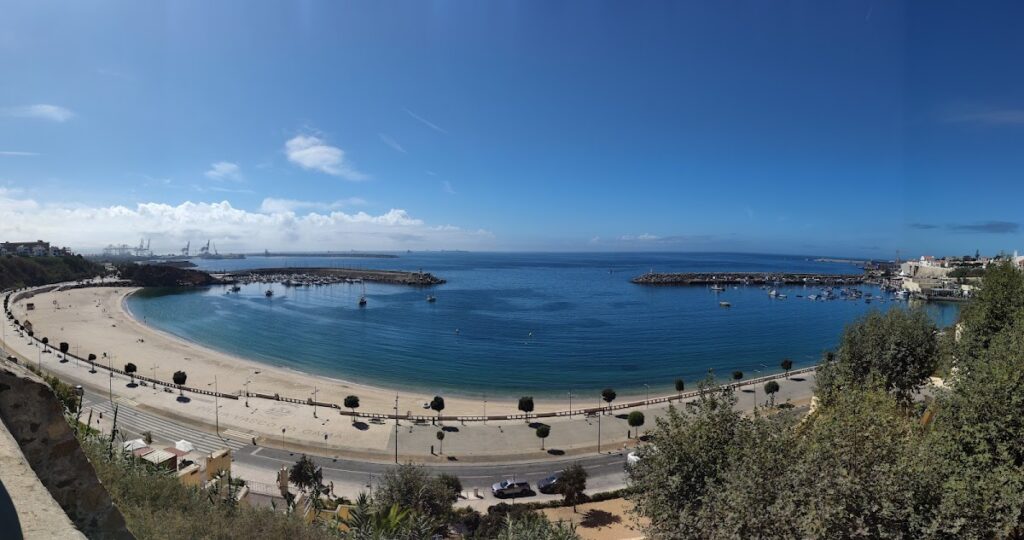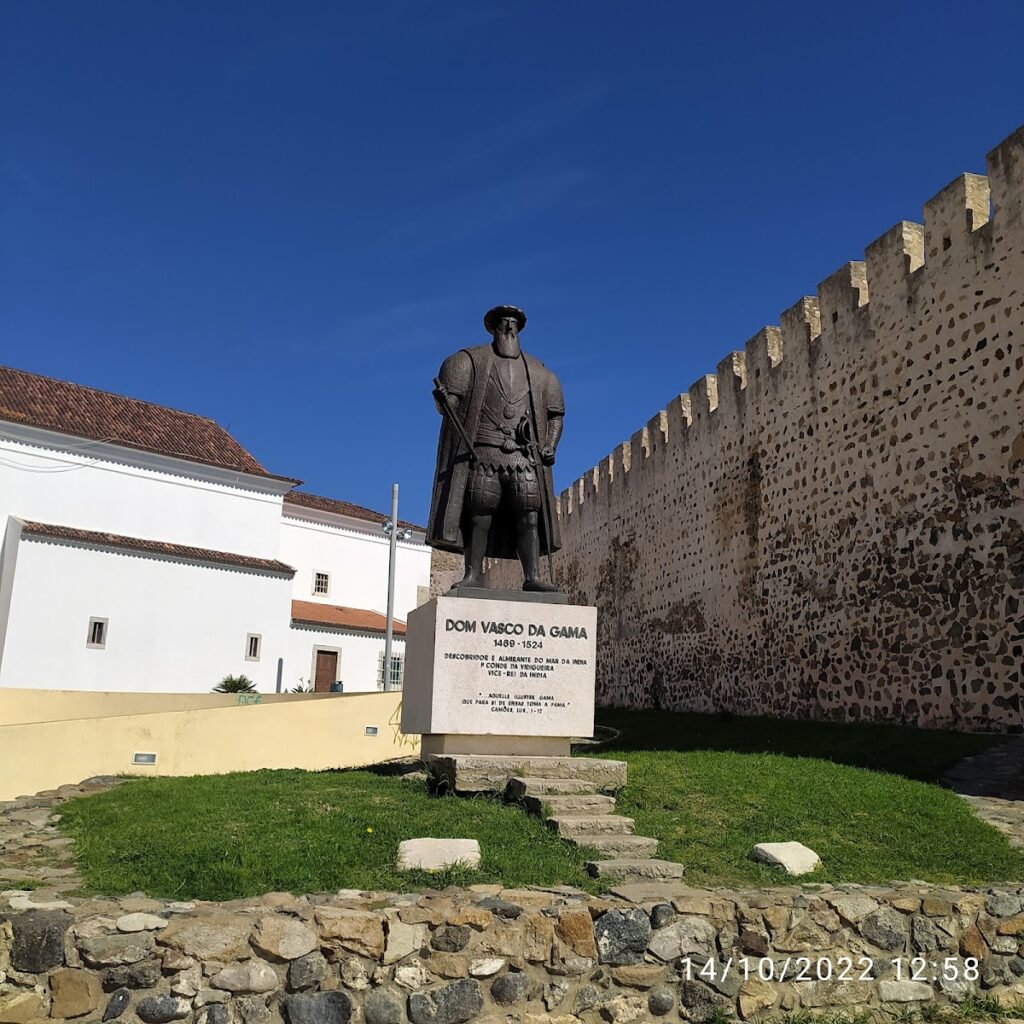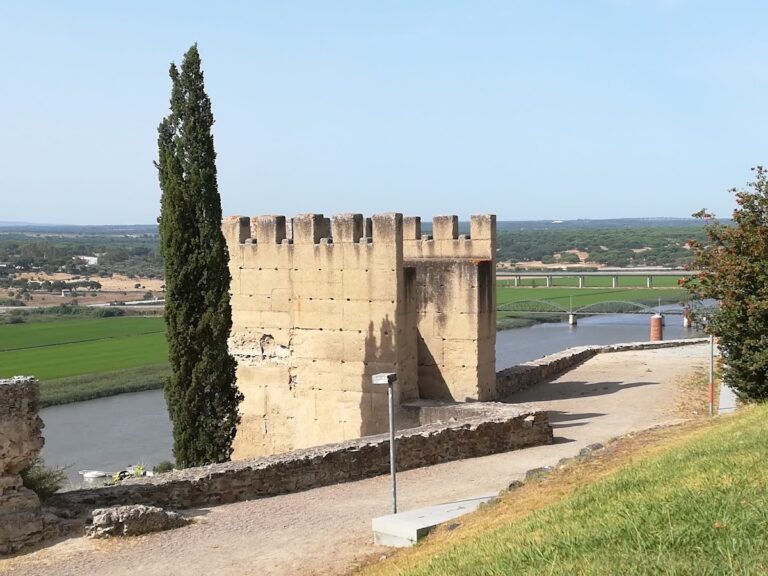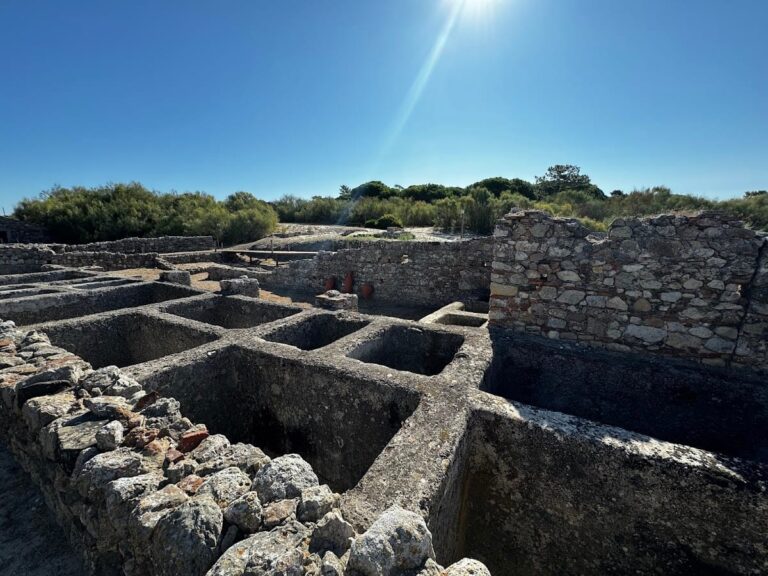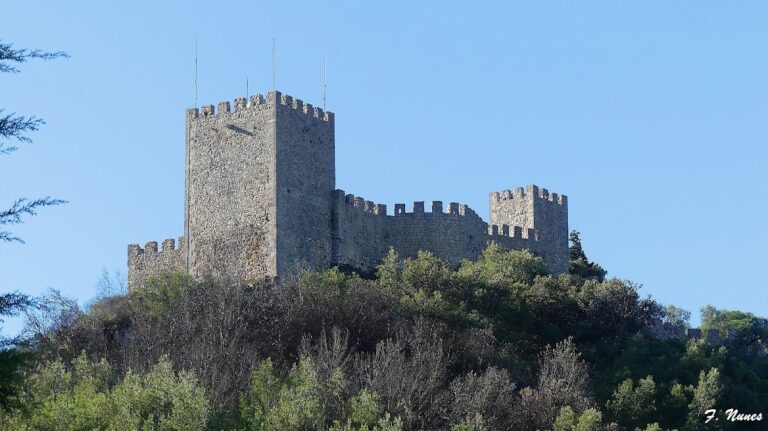Castelo de Sines: A Historic Portuguese Coastal Fortress
Visitor Information
Google Rating: 4.4
Popularity: Medium
Google Maps: View on Google Maps
Official Website: www.sines.pt
Country: Portugal
Civilization: Unclassified
Remains: Military
History
Castelo de Sines is located in the municipality of Sines, Portugal, and was constructed under Portuguese rule. The site’s strategic position atop a coastal hill has attracted human activity since prehistoric times, with evidence of Paleolithic and Epipaleolithic occupation. It may have featured an Iron Age fortified settlement (castro), but the first enduring settlement appears to have been established during the Roman period, possibly serving as the harbor for the nearby city of Miróbriga.
During Roman times, the area saw significant development. Archaeological findings include the base of a statue dedicated to Mars, the Roman god of war, which is now embedded in the castle walls. Epigraphic inscriptions suggest the presence of a Roman temple, noted in documents from the early Middle Ages and studied by researchers in the early 20th century. In the vicinity of the castle, a 1st-century fish-salting factory and a ceramic kiln point to industrial activities, while further evidence reveals continued settlement through Late Antiquity from the 4th to 6th centuries.
The site experienced a resurgence in the Early Middle Ages, possibly housing a Christian temple during the 7th century or Mozarabic period, with fragments of this structure later reused in the castle’s walls. However, after this period, there is a notable absence of records until the late Middle Ages, with no direct indications of habitation during the Islamic period.
Sines was reconquered from Moorish control by King Afonso III of Portugal and incorporated into the territory overseen by the military Order of Santiago. The town itself expanded during the 13th and 14th centuries. In 1362, King Pedro I granted a charter commissioning the construction of a defensive fortress. Despite this, the actual building of the castle did not begin until around 1424, initiated by Francisco Neto Pão Alvo.
The castle’s keep tower is traditionally regarded as the birthplace of the famed explorer Vasco da Gama, born in 1469. His father, Estêvão da Gama, served as the castle’s governor and contributed to its construction and maintenance. In the 16th and 17th centuries, the castle’s defenses were improved with additions such as a small star-shaped battery on the southern side and the nearby Forte do Revelim, constructed to shield the town and port from pirate assaults.
In the early 19th century, during the Peninsular War, French troops caused damage to the castle, notably defacing the royal coat of arms above the main gate. By the late 19th and early 20th centuries, the fortress had lost its military purpose and was adapted for civilian uses including housing and gardens.
Recognized as a Site of Public Interest in 1933, Castelo de Sines underwent partial restoration in 1956 and benefited from archaeological investigations in the 1960s and 1990s, which uncovered further Roman and early medieval remains, including portions of the early Christian temple integrated into the castle walls. Major restoration and cultural projects took place between 1998 and 2001, followed by additional works in the 2000s. These efforts included the creation of the Municipal Museum of Sines and the Vasco da Gama House Museum within the keep, inaugurated in 2008 with the presence of Portugal’s president.
Excavations and geophysical surveys continued into the 2010s and 2020s, identifying subsurface remains of buildings and structures associated with the castle’s long history. Notably, the Roman fish-salting factory close to the fortress was opened to the public in 2021. Today, the castle remains an active cultural venue, hosting significant music festivals and other events.
Remains
Castelo de Sines crowns a cliff overlooking the Atlantic Ocean in the historic heart of Sines, covering approximately half a hectare. The fortress follows an irregular trapezoidal layout, roughly rectangular in shape, reflecting the Manueline architectural style prevalent in the early 15th century rather than the traditional rounded Gothic plans. Its design includes a main keep tower and three additional turrets: two polygonal towers positioned at the northern corners and a circular tower at the southwestern corner.
A small star-shaped battery joins the southern wall of the castle, a later defensive addition from the 17th century aimed at enhancing protection against attacks from the sea. This battery emphasizes the evolving military needs during the 16th and 17th centuries, supplementing the castle’s original fortifications.
The principal keep tower, situated at the northwest angle, rises three stories tall. Each side of the tower features three windows per floor, with the top-floor windows distinguished by mullions — vertical stone bars dividing the glass — which may be remnants of the tower’s original 15th-century design. Today, the keep houses the Vasco da Gama House Museum, which presents a multimedia exhibition dedicated to the explorer’s life and voyages.
Two main gates provide access to the fortress. The original entrance faces Largo Poeta Bocage, while a more recent gate was opened during restoration work in the 21st century, oriented towards Largo João de Deus. Other former entrances have been sealed off over time. Inside the castle walls, near the polygonal towers and close to the main gate, stands the former governor’s palace, known as the Paço dos Governadores Militares or alcáçova. Once a two-story building, this structure has been heavily modified and currently serves as the main museum space, accommodating the Casa Forte, which displays valuable archaeological collections.
Among these collections are significant treasures such as the Phoenician Gaio Treasure, dating from the 7th century BCE, and the Africano Treasure comprising silver coins. These artifacts underscore the long and diverse history of the site, revealing connections beyond the immediate region.
The former barracks of the castle have been repurposed for cultural and educational activities, including a library, educational services, a café, and artist residencies during the summer months. The old garrison house functions as the castle’s reception area, while the former stables now accommodate museum storage and administrative offices.
Archaeological finds within and around Castelo de Sines include Roman mosaics, fragments of fine pottery such as terra sigillata (a type of glossy red Roman ceramic), amphora bases, and tesserae (small tiles forming mosaics). Two Roman fibulae (decorative brooches or pins) were discovered, representing different chronological and cultural types: one common in Roman-era Portugal from roughly the 1st century BCE to the 1st century CE, and another, rarer type associated with Central European influences dating from the 4th to 5th centuries CE.
The castle walls themselves incorporate repurposed stones from earlier constructions, including materials taken from an early Christian temple believed to have existed on the site. These walls suffered partial collapses in the mid-20th century and damage from the 1969 earthquake, which caused the fall of one tower. Restoration efforts have focused on stabilizing the exterior walls, preserving wooden roof frameworks, as well as maintaining plaster and ceiling artwork.
In recent decades, the castle has been integrated into the urban fabric by opening a new eastern entrance, linking it with pedestrian routes through the town. Its surroundings also feature historic landmarks such as the Igreja Matriz (main church), the Vasco da Gama statue, the town hall, and the Chapel of Mercy, with the nearby Roman fish-salting complex representing an important aspect of the site’s archaeological heritage.
